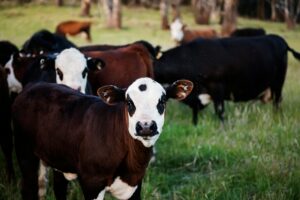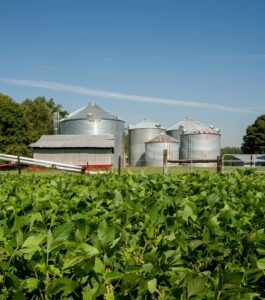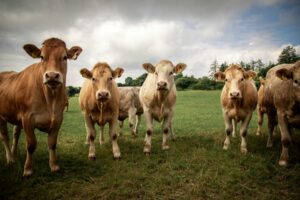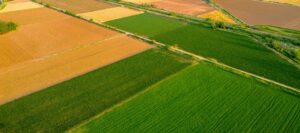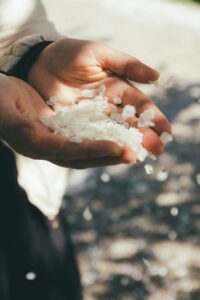Introduction
Sunflower seed is primarily used for manufacturing sunflower oil and oilcake (what is left after the oil has been extracted). After the hull is removed the seed can be consumed or used for different oil production. Most of the seed produced is marketed locally to expressers, animal feed and for seed.
The greatest importance of sunflower production is the extraction of oil from the seed. Sunflower oil is used on a daily basis in households, restaurants and various food industries. Sunflower is the basic raw material for the preparation of margarine and spreads, used daily by millions of people. Sunflower oil can also be converted to diesel for use in diesel engines as biofuel.
The sunflower seed also produces oilcake, which is widely used for animal feeds (as sunflower oilcake meal) because of its high protein content. Sunflower “whole seed” (fruit) is sold as a snack food, after roasting in ovens, with or without salt added. Sunflowers can be used to make a peanut butter alternative, sunbutter. It can also be mixed with rye flour to make bread (in Germany this is called Sonnenblumenkernbrot – literally: sunflower whole seed bread). It is also sold as food for birds and can be used directly in cooking and salads.
Sunflowers also produce latex and are the subject of experiments to improve their suitability as an alternative crop for producing hypoallergenic rubber.
Source: A Profile of the South African Sunflower Market Value Chain (see "Websites & publications" heading); https://en.wikipedia.org/wiki/Sunflower
International business environment
- The major global oilseed crop by some distance is soybean. Sunflower comes in third after soybeans and canola (rapeseed) (USDA, 2025).
- Russia, Ukraine, EU, Argentina and Turkey are the largest producers of sunflower seed (USDA, 2025). The EU and Turkey import the most sunflower seed, while Ukraine, Russia, Argentina, Turkey, and the EUare the largest exporters (USDA, 2025).
Further reference:
- Find circulars on the global environment by the United States Department of Agriculture (USDA) at https://apps.fas.usda.gov/psdonline/circulars/oilseeds.pdf
- www.sunflowernsa.com, website of the National Sunflower Association (USA)
South Africa: imports and exports
See the monthly bulletins and Sunflower & Soybean Forum presentations on the South African Grain Information Service (SAGIS) website for updated information. Check also whether the publishing of the annual Sunflower Seed Market Value Chain Profile, which included an analysis of sunflower imports and exports, has resumed. These could be found on the Directorate Marketing pages on www.nda.gov.za, website of the Department of Agriculture.
- The SADC Free Trade Agreement facilitates flow of commodities among SADC countries at no tariff charges.
- With regard to exports, phytosanitary requirements and quality standards must be adhered to and a PPECB certificate must be obtained.
Local business environment
Find the Grading Regulations for sunflower and requirements for grain exports at http://agbizgrain.co.za.
The Free State (62.3%) and North West Province (34.8%) are the major producers of sunflower seed, followed by Limpopo (11.6%) (DoA, 2025). The area planted with sunflower generally increases in drought-affected seasons owing to sunflower performing better in dry conditions and having a late planting window relative to maize.
Sales of sunflower seed are mostly to the domestic market with very little quantities destined for the export market. This can be due to the fact that our processing capacity in the country is big enough to accommodate most of sunflower seed produced locally.
Grain farmers switch from sunflower to maize easily, many planting both as a way of diversifying their farming operations. Advantages of the crop include being able to grow on marginal soils with little fertiliser, being a consistent crop under unfavourable weather conditions, and that historically, it could be planted “as a last resort”. Negatives include Sclerotina, falling over problems, bird damage but also that under ideal conditions, sunflower does not provide the same returns as crops like maize and soybeans.
- Sunflower seed producers
- Crushers/expressers of seed (includes animal feed manufacturer)
- Refineries of crude oil (includes imported crude oil)
- Wholesalers and retailers
- Consumers
No statutory levies are applicable and the marketing of oilseeds is free from government intervention. The sunflower marketing season in South Africa commences on 1 March.
The Bureau for Food & Agricultural Policy (BFAP) Baseline 2025-2034 believes enhancing the oil content of sunflower cultivars is “critical” for improving the competitiveness of crushing operations in this country and for the broader sunflower value chain (BFAP, 2025).
Further reference:
- Statistics (e.g. crop estimates, export/import etc) may be found on the websites of the Department of Agriculture, www.nda.gov.za, Grain SA, www.grainsa.co.za, and SAGIS, www.sagis.org.za
- The annual Bureau for Food & Agricultural Policy (BFAP) Baseline comments on the performance of, and expectations for, sunflower and the other oilseed crops. See www.bfap.co.za.
- Find the Grading Regulations for sunflower and requirements for grain exports at http://agbizgrain.co.za.
Source: A Profile of the South African Sunflower Market Value Chain; Abstract of Agricultural Statistics 2025; Bureau for Food & Agricultural Policy (BFAP) Baseline 2025-2034; BFAP study for GrainSA in 2015 – see www.grainsa.co.za/the-future-of-sunflower-production-in-south-africa
For the newcomer
Find Sunflower production … a concise guide at www.nda.gov.za Other grower guides are listed under “Websites and publications“.
National strategy and government contact
Find information about the Department of Agriculture directorates at www.nda.gov.za
Role players
View the Premium Listings below (scroll down or click on “Premium Listings” on the Table of Contents to the right).
Further reference:
- The Oil and Protein Seeds Development Trust provides funding for research on sunflowers, soybeans and groundnuts that is in the interest of producers, processors and consumers.
- Find an extensive list of role players on www.sagis.org.za – take the “List of Co-workers” and then “Sunflowers” menu options.
Websites and publications
Visit the websites listed and already mentioned on this page.
- Useful information regarding sunflowers is available on the ARC website www.arc.agric.za. Printed guidelines on sunflower production, and other printed information are available at ARC-GC. Phone 018 299 6199 for the following two: (i) Sonneblomproduksie: ‘n Bestuurgids vir die Wenprodusent (ii) Sunflower Diseases and Pests / Sonneblomsiektes en -plae
- Call 012 842 4017 or visit www.arc.agric.za for the publication Agro-processing of Oil Seeds (Soy beans, sunflower) by ARC-Agricultural Engineering (ARC-AE).
- CD Roms from the ARC-PHP (Plant Health and Protection) include: (i) Crop Pests, Vol. 4: Field Crops and Pastures Pastures (ii) Medically Important Spiders And Scorpions Of Southern Africa.
- Read the Bureau for Food & Agricultural Policy (BFAP) document Sunflower Quality Report (2020) at www.bfap.co.za/sunflower-quality-report
- See whether the annual A Profile of the South African Sunflower Market Value Chain publication is being published again. Go to the Department of Agriculture Directorate Marketing web pages at at www.nda.gov.za. Grower notes, namely Sunflower production guidelines, are also available elsewhere on this website.
- Find the Pannar Sunflower Production Guide at www.pannar.com.
- Consult the AgriSETA Learner Guide Primary Agriculture “Harvesting agricultural crops” at www.agriseta.co.za.
Some articles
- Find sunflower articles and the research database at www.opot.co.za.
- Ma’Ali S. 2020, May 31. “How to improve the oil yield of a sunflower crop”. Farmer’s Weekly. Available at www.farmersweekly.co.za/crops/field-crops/how-to-improve-the-oil-yield-of-a-sunflower-crop/
- Reporter. 2018, March 15. “When to plant sunflower for optimal yield”. Farmer’s Weekly. Available at www.farmersweekly.co.za/crops/field-crops/plant-sunflower-optimal-yield

